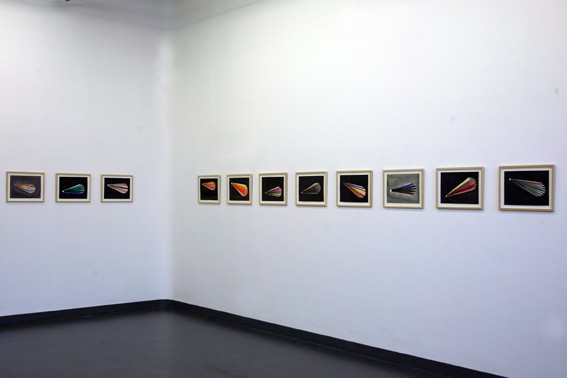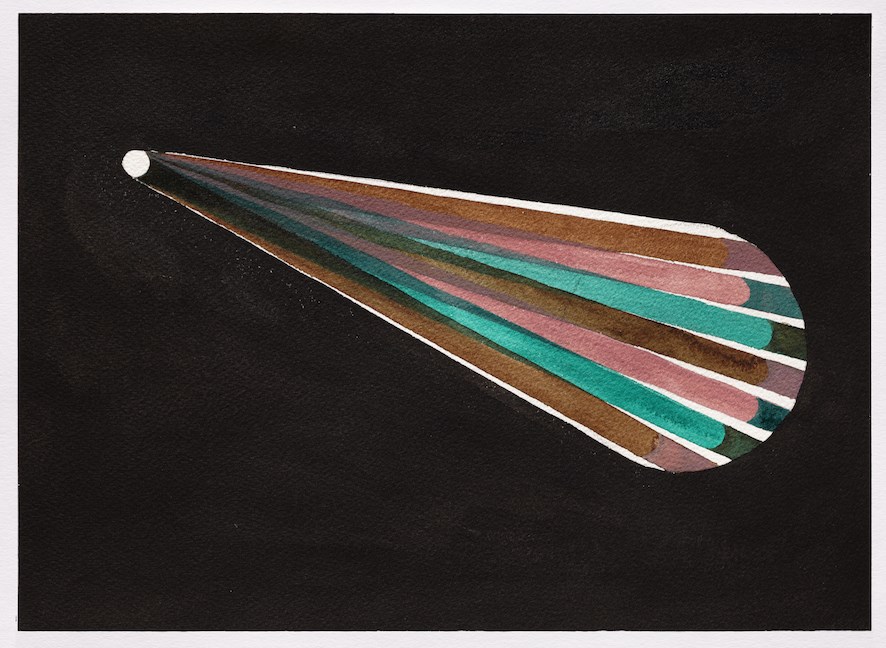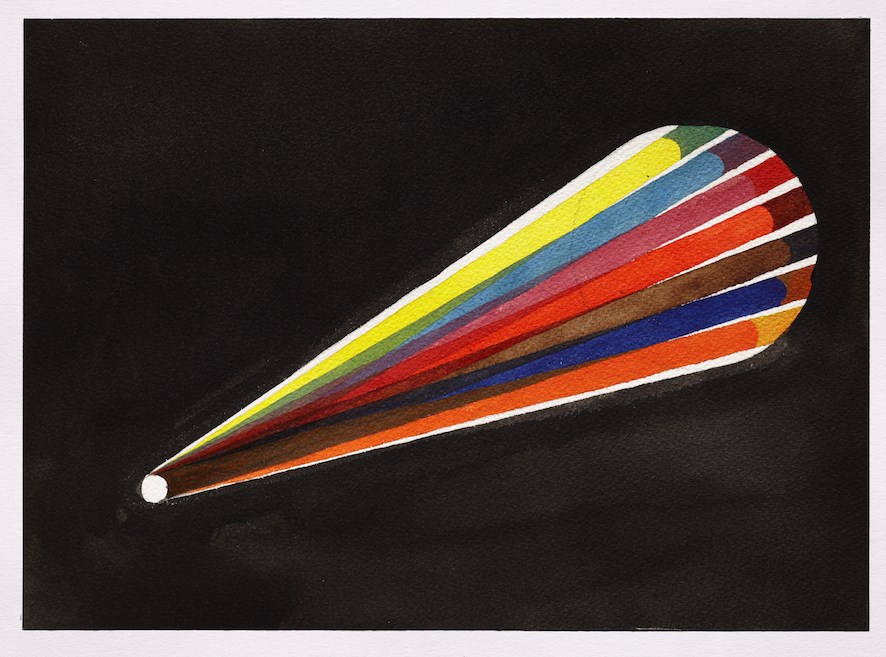Claim to Universality
Colour Theory Exercise 1-20 (2011-2012)
‘All being is based on movement ... And likewise in the universe, movement is the basis of everything. Peace on earth is an accidental congestion of matter. To take this congestion as basic is mistaken ... The work of art, too, is first of all genesis; it is never experienced purely as a result.’ Taken from Paul Klee his text: Creative Credo from 1920.



Claim to Universality Colour Theory Exercise 1-20 (2011-2012) all works on paper, ink and watercolour, 26x36 cm, At KIOSK, Gent, Belgium 2012
Sara van der Heide presents a series of twenty watercolours under the title of Claim to Universality. Colour Theory Exercise 1 – 20 (2011-2012). The series is based on a drawing by Lena Bergner, made in 1927. Bergner was a student of Paul Klee’s at the famous Bauhaus. An unorthodox institute for art education, the Bauhaus developed influential theories on art and design and also promoted a certain way of life. The school was founded in the German Weimar Republic, on the eve of the national-socialist era. In 1933, the Nazis closed the by-then mythical Bauhaus. They claimed it produced ‘orientalist cubist forms that belong at the edge of the desert’ and that it was a home for ‘Bolsheviks, Jews and other inferior races’, as Hans Severus Ziegler wrote in 1934.
Lena Bergner’s original drawing is titled ‘Belichtung/Beschattung’ and shows a small circle in the upper left from which several rays of light and colour start, to fan out in a larger circle. In her twenty variations on Bergner’s drawing, Van der Heide sets out to examine the fundamental characteristics of watercolour painting: colour and light. Her works are presented in the cabinet adjacent to KIOSK’s dome room, in a horizontal band interrupted by the window and doorways. The drawings are hung so that together, the rays of colour and light form a waving line. The space between the colour exercises is also charged with ‘cosmic energy’, an important concept in Paul Klee’s methodology, pointing out that art and nature spring from the same source and are both part of a greater, cosmic whole. Klee did not just want to show the visible material world, but also the intangible: the world of ideas, art.